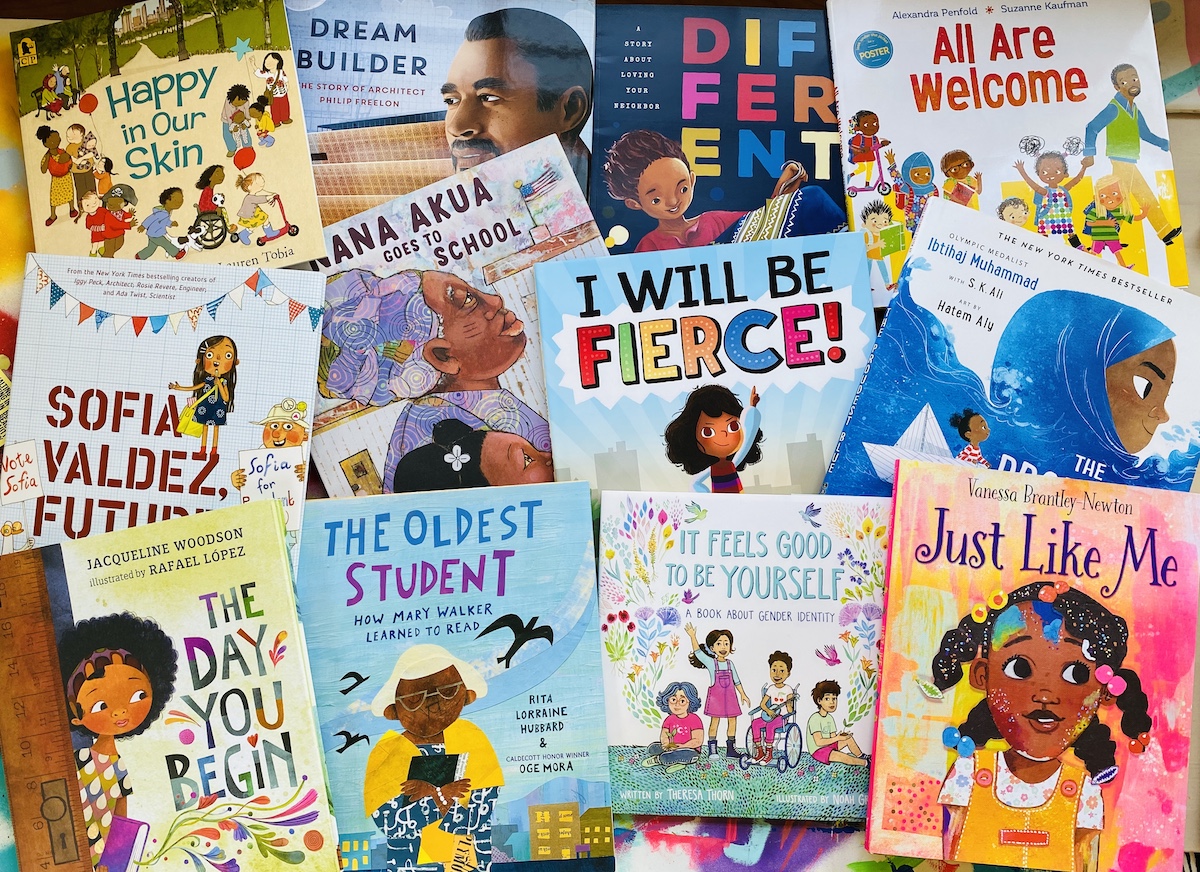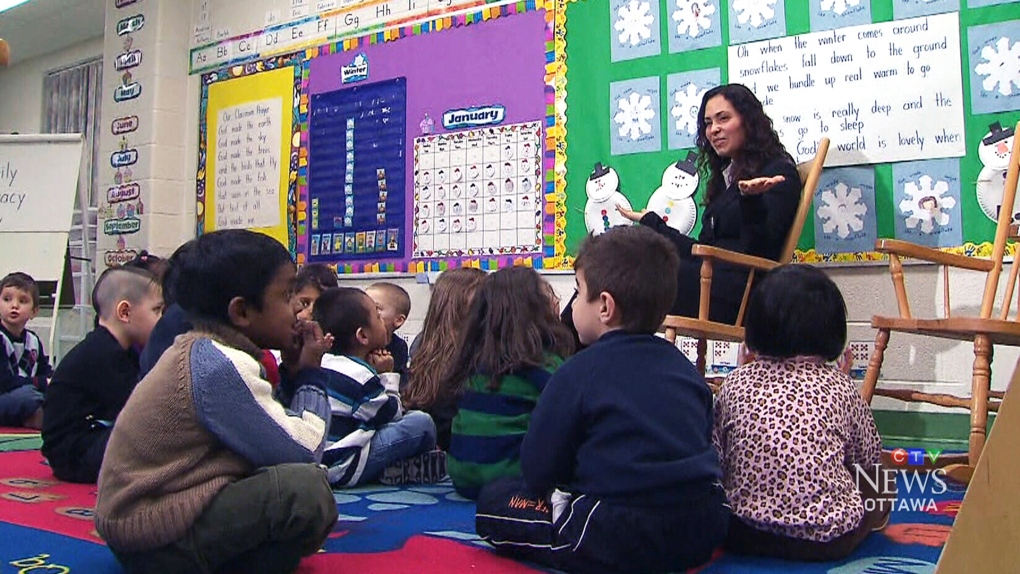
image via theartofeducation.edu
Culturally responsive instruction is an approach to teaching and learning which incorporates materials that reflect students’ cultural communities and those of different communities. The idea is to draw students in with what is familiar to them (“mirrors”) and also offer new information in areas they are not familiar with (“windows”). This is sound pedagogy that increases engagement and retention; the teacher taps into schema that already exist to connect new information and build a new schemata. In light of the widespread movement to remove diversity from American educational materials and curricula, it may not come as a shock that educational materials and resources are showing a troubling lack of representation for non-white cultures and ethnicities.
A meta-analysis conducted in 2021 examined 160 studies to determine the level of representation for non-white, non-European groups. There were some key findings from the study:
- Disparities in representation between racial, ethnic and gender groups are present.
- Portrayals of these groups are generally affirming and authentic, but some groups are subject to more stereotyping and inaccuracy than others.
- We are not where we need to be to create a sense of belonging for all students and to represent all groups with authenticity and nuance.
- The process of getting to appropriate and necessary levels of representation has been materially damaged by a misinformed and misdirected focus on Critical Race Theory, which does not apply to culturally responsive instruction.*
That last one is important because it is responsible for a chilling effect in which teachers avoid any educational resource that mentions race for fear of transgressing new, restrictive policies. But a critical point here is that culturally responsive education is for all students, not just those in marginalized groups. Research has repeatedly demonstrated that white students benefit significantly from educational approaches that are inclusive. Such approaches increase their ability to think critically at high levels, adapt more readily to new environments, and collaborate effectively with a wide range of people – all important life and job skills. Right now, education in a lot of places is only addressing the culture of white, European, male students (and, to a slightly lesser degree, white, European, female students). Non-white students have far fewer classroom resources that they can related to (mirrors) and white students have little outside their own experiences that they can explore and understand better (windows). There’s plenty of research that demonstrates the efficacy of this approach; it demonstrably increases engagement, and engagement increases learning. There’s also research demonstrating that culturally responsive materials support oral and written language development – both critical for learning as students move up the grades.

image via CTV News
There’s also interesting research showing that greater representation helps non-white students with identity formation; they identify with characters who are like them and that helps them integrate and formulate how they feel about their own identity as a member of a particular group. This point alone demonstrates how critical it is that all groups are represented and represented positively and authentically. If a child only sees her ethnicity or race as a supporting character, or in stereotypical ways, or not at all, her understanding of her own identity is negatively impacted – she may come to see herself as not important, or as disconnected from American culture. She may also decide that school doesn’t relate to her or offer her anything and drop out. By eliminating or restricting representation, districts and schools can materially damage a student’s potential to succeed. That students are then blamed for their inability to connect with the curriculum on offer – making that inability a character issue rather than a situational one — is one of the cruel ironies of this new push to eliminate reference to race and ethnicity.
Let’s take a look at some of the disparities various studies identified:
- Studies of literature curricula, including research on a large national sample from the Early Childhood Longitudinal Study, Kindergarten Class of 1998–1999 (ECLS-K), found that more books depict White, male American characters and traditions, meaning White students and male students see more mirrors than windows. Individuals not of that racial and gender group have more windows than mirrors.**
- Underrepresentation is occurring in all types of text: children’s picture books and textbooks.
- This issue is present even at the earliest grade levels (PreK). One study found that in 90% of board books were focused on white characters. Bilingual texts are similarly skewed, with most books containing a majority of white characters in texts intended for mostly Hispanic students. Mixed-race representation was the worst, occurring in only 1% of texts even though people identifying as mixed race make up more than 10% of the total U.S. population.
- A very recent study showed that of the 3,717 children’s books the researchers received from U.S. publishers, 12% were about Black/African people, 9% were about Asians; 6% were about Latinx individuals; 1% were about Indigenous people; 0.9% were about Arabs; and 0.1% were about Pacific Islanders. Everything else (71%) was either about white people, brown people with no specific ethnicity or cultural connection, or anthropomorphized characters like talking animals or crayons.
- And this: “Research on U.S. history textbooks indicate White, European Americans are featured in over half of pictorials and illustrations. In some cases, it is more than 80%. Representation of people from BIPOC (Black, Indigenous People of Color) backgrounds are rarely featured, with some ethnic groups featured as low as 1%.” That’s just pictorials and illustrations, not the text of the history book itself.
- Disparities extend to software applications, videos, and posters used by classroom teachers as well.

image via educationnorthwest.org
We can get even further into the weeds here if we start looking at gender representation, especially non-binary representation, which is almost non-existent, and what the author calls “intersectionality.” This is where specific ethnicities and gender are both in play. One study of Newberry winners found that of the 120 main characters examined, 54% of White characters were male; 50% of Native American characters were male; 80% of Black characters were male; and 75% of Asian American characters were male; all Middle Eastern characters were male; and the one Hawaiian/Pacific Island character was female. There’s no way to look at this and see any sort of balance and this is just the tip of the iceberg. There’s more data reported in the study that looks at how accurately the various ethnic and cultural groups are portrayed which I won’t get into here because of space considerations, but their finding was that portrayals were mostly good but sometimes super not, especially for groups like Asian men and Native Americans. History texts are particularly problematic, especially in how they handle indigenous people. One study found that some events were essentially told only from European perspectives (98%) and even failed to name the indigenous tribe involved.
How important is all this? Very.
American schools are becoming more diverse. Public School Review cites statistics that U.S. schools’ average diversity score*** is .69, with Hawaii being the most diverse (.80) and West Virginia the least (.20). Some cities, such as Tulsa, Oklahoma that were previously in the middle of the diversity rankings for the top 100 U.S. Cities, are now positioned in the top 20, i.e. more diverse. A few states still lag behind the rest of the country, like Maine, Vermont, and West Virginia, which have only about a quarter of the average diversity of the rest of the states, but overall, population growth in the U.S. is being driven by people of color, so diversity in U.S. schools is going to keep increasing. Because of this diversity – and diversity here encompasses race, ethnicity, culture, gender, and income – U.S. schools are in greater need of classroom resources which reflect that diversity. Without it, we are underserving millions of students and leaving a lot of potential and productivity on the sidelines. In Part 2, we’re going to look at what teachers, schools, and districts need to do to ensure all students feel included, seen, and affirmed, no matter what their race, cultural background, or gender status.
*I’ve said this before and will keep saying it: culturally responsive instruction is not the same as CRT and is required by law under ESSA. The law actually requires that we leverage cultural affiliation and race to better instruct students and promote retention.
**Remember, we need the mirrors first because that’s the thing to which we attach the new information from the windows. But we also need the windows into other groups or we risk producing closed-minded thinkers incapable of understanding any perspective other than their own. And if you’re wondering how relevant a study from the 90s is, consider that teachers frequently hold onto books and units for decades for a variety of reasons. If they didn’t, no one would still be reading The Outsiders.
***The diversity score is a measure of the racial/ethnic diversity of student population based on six major racial/ethnic groups (White, Black, Latino, Asian or Pacific Islander, Native American, and Mixed/other race). The maximum diversity score (1.79) would occur if each group were evenly represented in the student population. Obviously, even with a high diversity score there are differences between cities and rural areas, between districts in the same region, and between schools within the same district.
